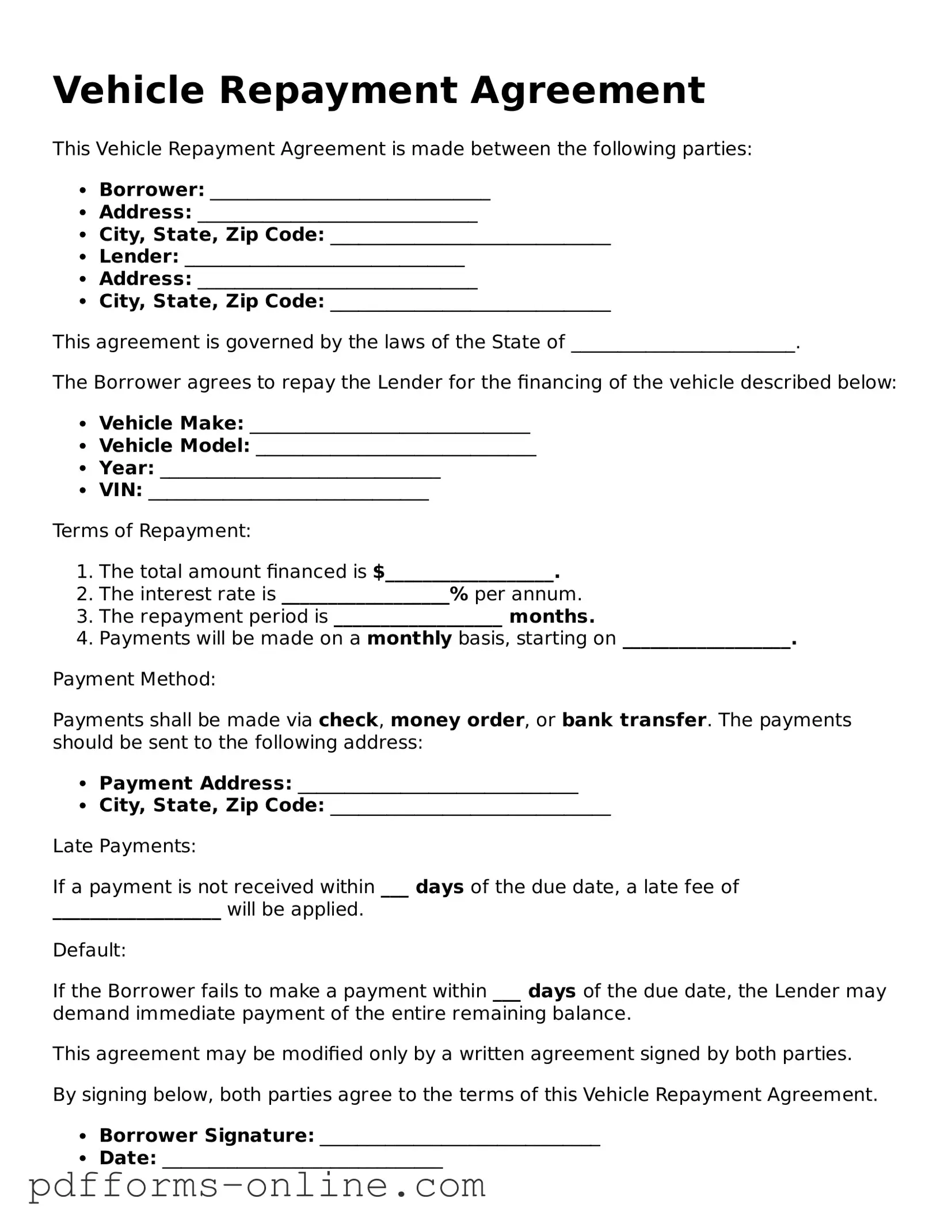Vehicle Repayment Agreement
This Vehicle Repayment Agreement is made between the following parties:
- Borrower: ______________________________
- Address: ______________________________
- City, State, Zip Code: ______________________________
- Lender: ______________________________
- Address: ______________________________
- City, State, Zip Code: ______________________________
This agreement is governed by the laws of the State of ________________________.
The Borrower agrees to repay the Lender for the financing of the vehicle described below:
- Vehicle Make: ______________________________
- Vehicle Model: ______________________________
- Year: ______________________________
- VIN: ______________________________
Terms of Repayment:
- The total amount financed is $__________________.
- The interest rate is __________________% per annum.
- The repayment period is __________________ months.
- Payments will be made on a monthly basis, starting on __________________.
Payment Method:
Payments shall be made via check, money order, or bank transfer. The payments should be sent to the following address:
- Payment Address: ______________________________
- City, State, Zip Code: ______________________________
Late Payments:
If a payment is not received within ___ days of the due date, a late fee of __________________ will be applied.
Default:
If the Borrower fails to make a payment within ___ days of the due date, the Lender may demand immediate payment of the entire remaining balance.
This agreement may be modified only by a written agreement signed by both parties.
By signing below, both parties agree to the terms of this Vehicle Repayment Agreement.
- Borrower Signature: ______________________________
- Date: ______________________________
- Lender Signature: ______________________________
- Date: ______________________________
